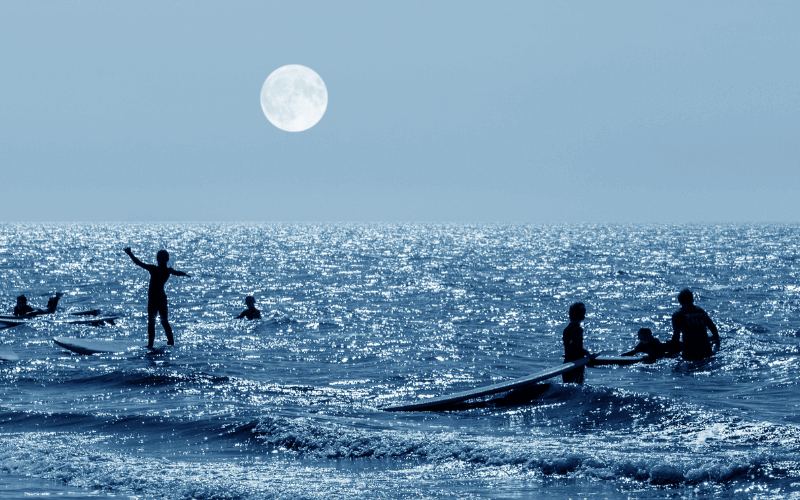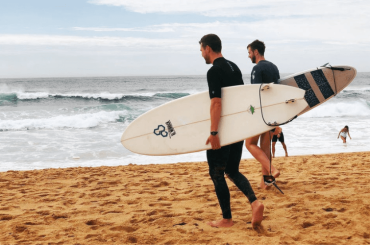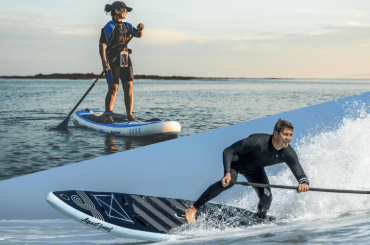There’s something about surfing at night that just feels dangerous. The waves are bigger and more powerful and the light from the moon and stars creates an eerie atmosphere.
But is surfing at night dangerous? Or is it just a feeling we get because it’s different from surfing during the day?
In this blog post, we’ll take a look at some of the dangers of surfing at night and see if it’s worth taking the risk.
What is night surfing and why do people do it?
Night surfing is a type of surfing that is done at night. People who might surf often do it because they enjoy the challenge of surfing in the dark. Night surfing can be dangerous, so it is important to be careful and to know what you are doing before you attempt it.
Because of the lack of light, night surfing can be more dangerous than surfing during the day. Also, the waves at night are often bigger and more powerful than during the day.
How dangerous is it to surf at night compared to during the day?
There are a few dangers that come with surfing at night that don’t necessarily happen during the day.
For starters, it can be more difficult to see waves coming. This means that you might not have as much time to react and get out of the way. Also, when you are surfing at night, you are more likely to collide with other surfers, since it can be hard to see them in the dark.
In addition, there are a few animals that are more active at night, such as sharks. This means that you could be at a higher risk of encountering one while you are surfing.
Of course, these dangers don’t mean that you should never surf at night. If you are careful and know what you are doing, then surfing at night can be a fun and exciting experience. Just be sure to take the necessary precautions to stay safe.
Wearing reflective gear is one way to make sure you are visible in the water at night. You should also try to surf in well-lit areas, such as near a pier or under a street light.
And finally, be sure to let someone know where you are going and when you expect to be back, in case something happens and you need help.
What are some of the risks associated with night surfing?
There are a few risks associated with night surfing, the most dangerous being riptides. Riptides are fast-moving currents of water that can quickly pull a swimmer out to sea.
Other risks include getting stung by jellyfish or other marine creatures and of course, there is always the risk of drowning.
To stay safe while night surfing, it is important to swim with a partner and to stay close to shore. It is also a good idea to wear a life jacket and to bring a flashlight so that you can see where you are going.
Finally, be sure to listen to the advice of the surf instructors and lifeguards who are there to help keep you safe.
How can you stay safe while night surfing?
There are a few things you can do to stay safe while night surfing:
- Wear a bright rash guard or wetsuit so other surfers can see you.
- Use a surfboard with reflective tape on it.
- Don’t go out alone – make sure to tell someone where you’re going and when you’ll be back.
- Stay close to shore and don’t paddle out too far.
- Be aware of your surroundings and don’t surf in areas with strong currents or rip tides.
- Always wear a leash so you don’t lose your board in the dark.
- Finally, listen to your gut – if something doesn’t feel right, get out of the water and go home.
Also Read: How To Ride A Fish Surfboard?
What should you do if you get into trouble while night surfing?
There are the following things you should do if you get into trouble while night surfing:
- If you find yourself in trouble while night surfing, the best thing to do is to signal for help.
- If you have a flashlight, wave it in the air so that someone on shore can see you.
- If you don’t have a flashlight, try to wave your arms and make as much noise as possible so that someone will notice you.
- If you are with a partner, have them go for help while you stay in the water and try to signal for attention.
- If you are alone, try to swim toward shore and get out of the water as soon as possible.
- If you’re caught in a rip current, swim parallel to the shore until you’re out of the current, then swim back to shore.
- If you start to feel exhausted, float on your back and wave your arms to signal for help.
Remember, the best way to stay safe while night surfing is to be aware of your surroundings and to take precautions before you even enter the water. If you are ever in doubt, don’t hesitate to get out of the water and go home.
Remember, the most important thing is to stay calm and signal for help so that someone can come to your aid.
Final Words
So, is hitting the waves after sunset worth the risk? The answer is ultimately up to you. But if you do decide to surf at night, be sure to take extra safety precautions and always let someone know where you’ll be.
Always check the conditions before heading out and wear reflective clothing. With a little bit of planning and caution, you can enjoy some of the best surfing conditions around—just don’t forget your flashlight!





